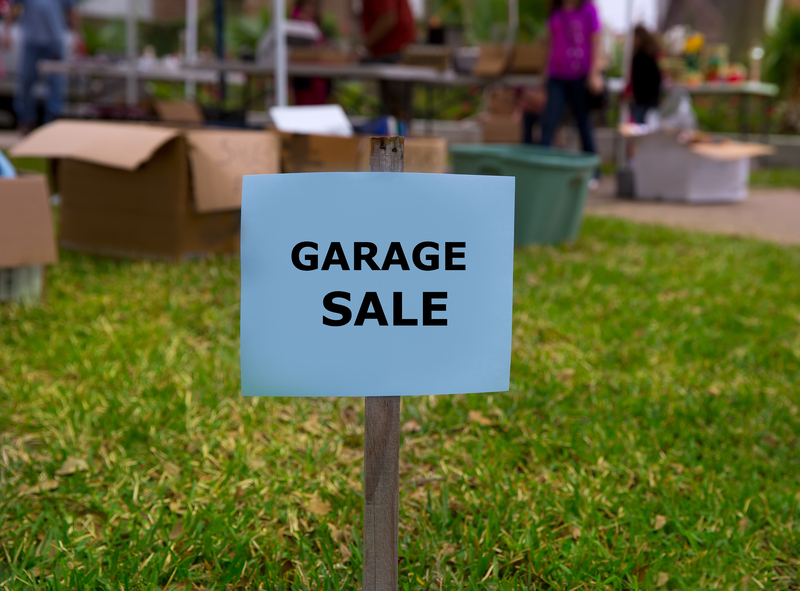From Kitchen to Recycling Center: The Journey of Old Cookware
Cooking at home is a cherished tradition across the globe, but what happens when our trusty pots and pans start to wear out? Every year, millions of households find themselves with old cookware that's chipped, rusted, or simply outdated. But these kitchen companions don't have to end up in landfills. Instead, their journey can continue -- from the kitchen to the recycling center. Explore with us as we uncover the fascinating and eco-friendly voyage of worn-out cookware and how conscious disposal can make a difference for both our homes and our planet.
Understanding the Lifecycle of Cookware
Most of us don't give much thought to what happens to old cookware once it leaves our kitchen cupboards. Yet, each piece has a unique story -- from manufacture, years of service in meal prep, until finally being replaced. But before tossing your old pots and pans in the trash, it's important to understand what they're made of and how their materials impact recycling options.
Common Materials Used in Cookware
- Aluminum - Lightweight, affordable, and highly recyclable
- Stainless steel - Durable, doesn't rust easily, and widely accepted in recycling facilities
- Copper - Excellent heat conductor, but needs specialized recycling
- Cast iron - Heavy and long-lasting, and can be recycled or even refurbished
- Non-stick coated pans - Trickier to recycle due to chemical coatings
- Glass and ceramic bakeware - Not always suitable for curbside recycling
Understanding the makeup of your old cooking vessels is the first crucial step to responsible disposal.

When Is It Time to Replace Your Cookware?
It's tempting to keep using pans and pots until they're on their last leg -- but how do you know when it's truly time to part ways? Here are some telltale signs:
- Warped bottoms - Especially in pans, this causes uneven cooking.
- Peeling non-stick coatings - Can release unwanted chemicals into food.
- Rust - Especially in steel and iron cookware, which can be tough to reclaim.
- Deep scratches or chips - Can harbor bacteria and reduce safety.
- Handles that wobble or are about to break - Decreasing the safety of use.
If your cookware matches any of these, it's time for a new chapter.
Giving Old Cookware a Second Life: Before Recycling
Before considering recycling, ask: Can my old cookware be reused, upcycled, or donated? Sometimes, just a little creativity or repair can prolong their service, keep them out of landfills, and even serve others.
Repurposing Ideas for Old Pots and Pans
- Garden planters: Old saucepans make quirky outdoor containers for plants.
- Kitchen decor: Hang vintage pans as decorative accents.
- Arts and crafts: Use lids and broken pans in creative art projects.
- Donation: Charities and thrift shops may accept gently used cookware.
However, not all old cookware is suitable for repurposing. When their lifespan is truly over, recycling is the most eco-friendly choice.
Sorting Cookware for Recycling
The next phase in the journey from kitchen to recycling center is sorting. Different cookware types are accepted by different recycling programs. Here's how you can prepare cookware for a new beginning:
Aluminum & Stainless Steel Cookware
- Remove plastic handles and glass lids (recycle them separately if possible).
- Check for recycling symbols or contact your local recycling center for guidance.
- If non-stick, find out if the facility accepts coated pans - many do not.
Copper and Cast Iron
- Specialized metal recycling companies can often handle these materials.
- Cast iron in bad shape can sometimes be sold as scrap metal.
Non-Stick (Teflon-Coated) Pans
- Check for facilities with the capacity to process chemical coatings.
- Some brands offer take-back programs for their non-stick products.
Glass and Ceramic Bakeware
- Most curbside programs don't accept bakeware due to high melting points.
- Seek specialty recycling drop-off points.
*Tip: Search online for "metal recycling near me" or check your city's waste management site for local guidance.
How Cookware Recycling Works: The Facility's Perspective
Once your old pots and pans arrive at the recycling center, a fascinating transformation begins. Here's a simplified look at what typically happens:
- Sorting: The first step is to separate metals (aluminum, steel, copper, iron) and remove non-recyclable parts.
- Cleaning: Cookware is washed to remove food residue, grease, and any attachments that cannot be recycled.
- Shredding: The items are mechanically shredded or crushed into manageable pieces.
- Melting: Shredded metals are melted at high temperatures in large industrial furnaces.
- Purification: The molten metal may be purified to remove impurities, ensuring quality for reuse.
- Solidifying: The purified metals are cooled and formed into bars or sheets -- the raw materials for new products.
- Manufacturing: Recycled metals are sent off to create new cookware or other products, giving your old kitchen tools a brand new life.
Did You Know? Recycling aluminum cookware saves about 95% of the energy needed to produce new aluminum from raw ore!
Environmental Impact: Why Responsible Disposal Matters
Landfills across the world are filling up with discarded metal products, including cookware. These materials can take centuries to break down and, in the process, may leach metals and toxins into soil and water. By choosing to recycle your old cookware:
- You conserve natural resources, as recycled metal removes the need for more mining or extraction.
- You save energy, especially with easily recycled metals like aluminum and steel.
- You reduce greenhouse gas emissions by decreasing the energy required to manufacture new goods.
- You support a circular economy where materials are kept in use as long as possible.
It's a small act with a big impact -- every recycled pan or pot helps protect the environment for future generations.
Special Considerations: Non-Traditional Cookware & Upcycling
Not all cookware fits the typical recycling mold. Items like stoneware, non-stick baking mats, and composite materials call for special handling.
- Silicone baking mats: These can sometimes be returned to manufacturers or specialty recycling programs.
- Enamel cookware: If chipped or damaged, check with local scrap metal dealers for acceptance.
- Mixed-material products: Disassemble what you can to separate recyclable from non-recyclable parts.
For products not easily recycled, upcycling in the home or garden may be the best alternative, reducing waste and adding unique personality to your living space.
Tips for Prolonging Cookware Life
Before your favorite pans become candidates for disposal, proper care can significantly extend their useful years. Here's how to optimize the lifespan of your kitchen tools:
- Follow manufacturer care instructions for cleaning, especially with non-stick and cast iron products.
- Use appropriate utensils: Wooden, silicone, or plastic utensils are gentler on delicate surfaces.
- Store cookware carefully: Stack with buffer cloths or hang to avoid scratches and dents.
- Avoid thermal shock: Don't move cookware directly from hot to cold environments.
- Season cast iron: Regular oiling maintains performance and prevents rust.
These simple habits can slow wear and tear, keeping your cookware in usable condition longer and reducing overall waste.
Brand Take-Back Programs and Extended Producer Responsibility
Some cookware manufacturers go the extra mile by offering take-back or recycling programs for their own products. Brands like Calphalon, GreenPan, and others sometimes enable you to send back old cookware, which they then recycle responsibly.
This approach, known as Extended Producer Responsibility (EPR), encourages companies to design products with end-of-life in mind, further reducing environmental impact. Always check with the manufacturer for available programs or local collection events when retiring your old cookware.

Frequently Asked Questions About Cookware Recycling
1. Can I recycle cookware in my regular curbside bin?
Most curbside programs do not accept cookware due to size, weight, or mixed materials. Instead, take it to a scrap metal drop-off or special collection event.
2. What about cookware with plastic or silicone handles?
If possible, remove handles and recycle components separately. Metal pieces are typically the only part accepted at recycling facilities.
3. Is it safe to cook with old, scratched non-stick pans?
No, significant scratches can release harmful chemicals. Retire and recycle these promptly.
4. How do I find a recycling center near me?
Search online for "cookware recycling near me," or contact your local municipal waste management office.
5. Are donation centers interested in old cookware?
If the item is clean and in good working order, many charities and thrift stores accept gently used cookware. Damaged or unsafe items should always be recycled.
Conclusion: The Lasting Journey from Kitchen to Recycling Center
Every pot, pan, or baking tin has a story -- from the hustle of family dinners to the inevitable wear and tear of daily use. But the end of a cookware item's journey in your kitchen doesn't have to signal the end of its usefulness. By choosing sustainable disposal options, you contribute to a greener, healthier world.
Remember, whether repurposing, donating, or taking that final trip to the recycling center for cookware, each action helps preserve resources, reduce waste, and inspire others to do the same. So next time you replace a battered old pan, pause for a moment and consider its journey -- and how you can play a pivotal role in the cycle of sustainability.
Make your kitchen a catalyst for change -- take your old cookware on a journey that leads not to the landfill, but to a brand new life!
